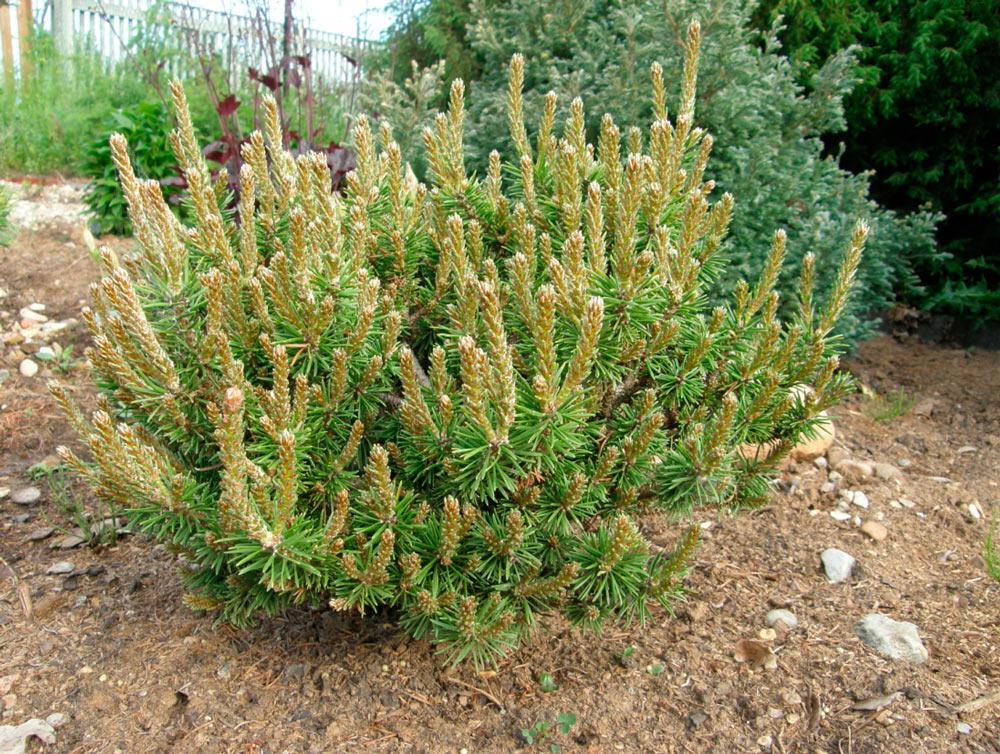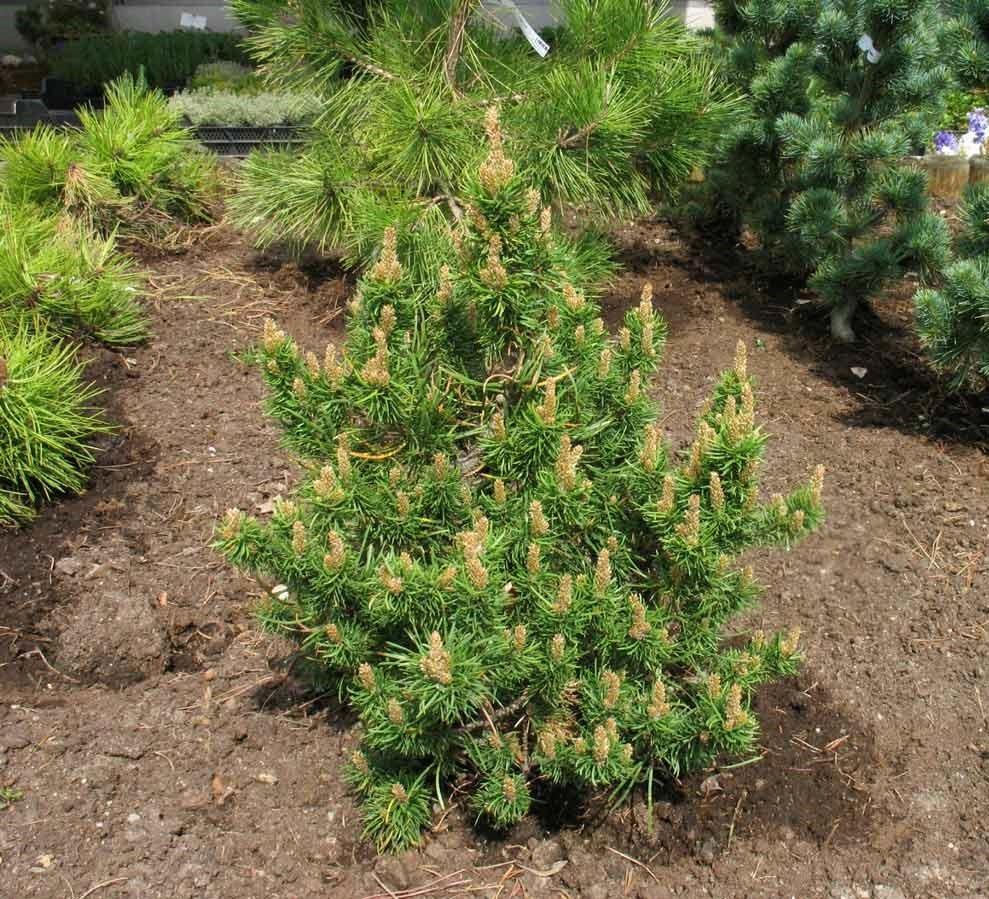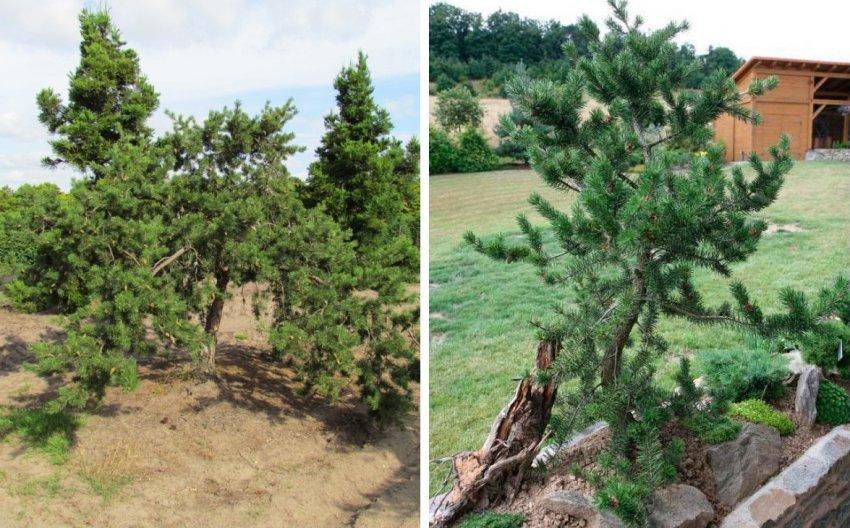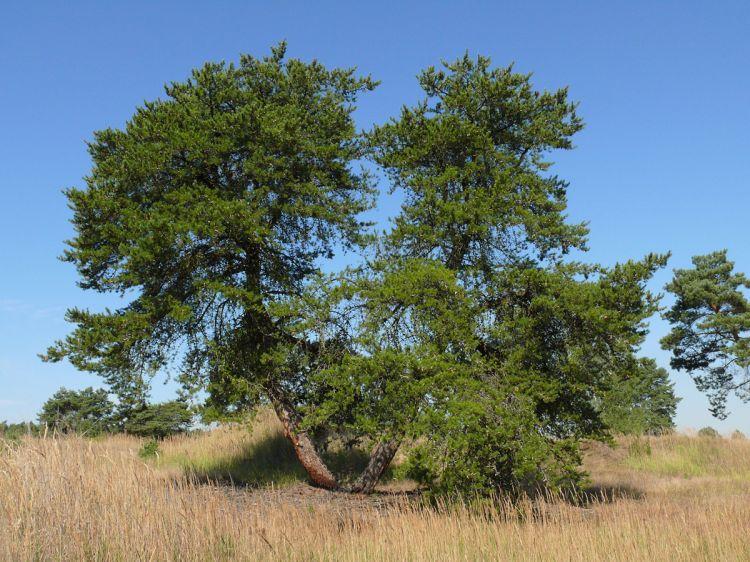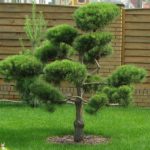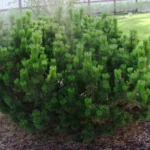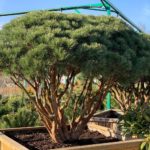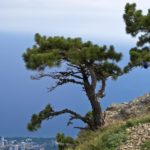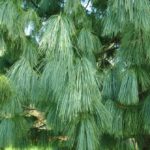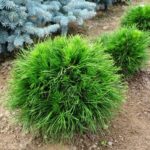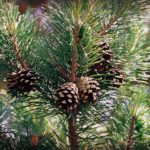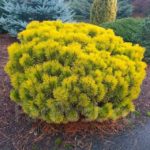Banksa pine is a common crop that has excellent decorative properties. This tree is well suited to growing in temperate climates and is considered low maintenance. In order for a culture to grow and develop normally, it needs to be properly cared for. Prevention of diseases and pests is of no small importance.
Description of pine
The conifer received its name in honor of the famous breeder Joseph Banks, who studied botany from the eighteenth to the nineteenth centuries.
This plant reaches a height of 20 meters. Moreover, the thickness of its trunk usually does not exceed 25 centimeters. In rare cases, it reaches 60 centimeters. In Canadian forests there are also real giants - up to 30 meters in size.
This crop has a rounded and well-branched crown. It is characterized by twisted short needles. Each bunch contains 2 needles, the length of which reaches 4 centimeters. The color of the needles changes over time. Young needles are yellow in color, but over time they acquire a dark green tint. The tree blooms in May.
Features of buds
The plant is characterized by unusual cones. They are short in length, strongly curved and pointed downwards. The scales of such fruits shine in the sun, after which they acquire a gray matte tint.
Pine cones have a valuable composition and contain many vitamins. They also contain essential oils and carotene. Therefore, the fruits of the plant are often used in folk medicine. With their help it is possible to obtain the following results:
- strengthen the immune system;
- get rid of pathologies of the upper respiratory tract;
- restore normal functions of the digestive organs;
- get rid of flu and colds;
- increase hemoglobin content in the blood;
- prevent stroke.
Distribution area
The culture has spread to Canada and the USA. In European countries, the plant began to be grown in 1785. In Russia, the culture is perfectly adapted to the middle zone. Banks pine is considered undemanding in terms of soil composition and lighting.It perfectly withstands gusts of wind and dry air.
Popular varieties
This coniferous plant has different subspecies, which differ in appearance and properties. Most often, dwarf hybrid varieties are used to design plots. Before boarding, it is important to study the description of each. So, the most common varieties include the following:
- Uncle Fogy - this dwarf variety reaches a height of 2 meters. It is characterized by a weeping crown and a curved trunk that bends towards the surface of the earth. The plant has beautiful green needles and branches that practically lie on the ground.
- Banska Stiavnica - this crop is characterized by slow development and reaches a height of 1-1.5 meters. The plant has a thick and dense crown, which has a cone shape. The variety is popular because it has an unusual light green color of needles. At the same time, the pine needles are quite dense and slightly twisted.
- Arktis - this dwarf pine has a loose and fluffy crown. Moreover, its needles have a grayish color. The height of the plant reaches approximately 3 meters. Its thin branches are directed in different directions.
- Chippewa is a small evergreen tree with small, light green needles. This variety is characterized by slow development. In 1 year, the tree literally grows by 2-3 centimeters. In addition, the plant has a flattened crown.
All varieties described are actively used in landscape design. But their predecessor, the Banks pine, is not inferior to the new subspecies in popularity. This plant is often used as a tapeworm. It also looks good in group plantings - in particular, as part of a hedge. Banks pine goes well with other coniferous crops.It can also be combined with foliage plants. In addition to its attractive appearance, an unusual fresh aroma is considered an advantage of the culture.
Planting Tips
Evergreen coniferous plants should be planted in the spring - from early March to mid-May. At this time, the soil begins to warm up after winter. It is recommended to buy seedlings of this pine from trusted nurseries. This variety is well suited to sandy, loamy and peat soil.
To plant a pine tree, you need to make a hole 1-1.5 meters deep, and place a drainage layer on the bottom. Before planting, the crop must be carefully removed from the container along with a lump of soil. It is recommended to avoid damaging the root system. Then you should carefully place the plant in the hole. It is important to take into account that when planting a seedling, you should not get rid of the earthen clod, which is a kind of protection for the delicate roots of the pine tree.
After this, the crop needs to be covered with a composition based on sand and soil and fertilized. In this case, the root part of the trunk should remain flush with the ground surface. If we talk about group planting, the interval between seedlings should be at least 3 meters.
Experienced gardeners do not recommend moving a tree that grows in the forest to a site. In this case, there is a danger that the tree will not take root or will quickly die.
Nuances of care
Despite the low maintenance requirements, some rules of agricultural technology still need to be followed. Thus, young trees need constant soil moisture. They should be watered 2-3 times a month. In summer it is recommended to carry out this procedure more often. Moist soil retains heat well and prevents the roots from drying out. It is also worth remembering about mulching and loosening the soil.These procedures help maintain optimal humidity parameters.
For several years after planting, the crop requires fertilizing. In spring, the young tree is fertilized with minerals. At the same time, an adult pine tree itself creates the necessary environment around itself from fallen needles, which contains all the elements necessary for the plant.
If we talk about pruning, then it is carried out only for decorative purposes. In this case, it is necessary to prune the branches in early spring. The crop is propagated by seed.
The plant is highly resistant to frost. Banks pines do not die even in harsh Canadian conditions. However, during periods of heavy snowfall, the spreading shoots of the plant cannot withstand the snow mass. Therefore, after winter ends, a large number of branches break.
In order for the tree to survive the winter, the following rules should be followed:
- In late autumn, carefully secure the shoots near the top. It is important to avoid damaging them.
- Before the onset of frost, cover the shoots with cotton cloth or use special material.
- Wrap the trunk to protect against hares and mice.
Thanks to the insulation of the plant, it will be able to survive even the snowiest winter. At the first rays of sunlight, the protective material must be removed.
Pest Control
Banks pine suffers from a number of pathologies typical of conifers. The most common problems include the following:
- Rust - its development is caused by the activity of fungal microorganisms. In this case, the main symptom of infection is the appearance of orange blisters on the needles, which contain spores. Infected pine becomes yellow and dries out. To cope with the disease, you need to use copper-based medications.The most effective remedies include “Hom” and “Abiga-Pik”.
- Fusarium - this pathology affects needles and shoots. In this case, the needles acquire a yellow-red tint. Gradually, the crown of the tree becomes thinner, the branches dry out, and the plant itself may die. It is impossible to cope with this pathology, so the pine tree must be destroyed.
The pine scale insect is one of the most difficult insects to remove, which often spoils conifers. Butterflies lay millions of eggs on the needles, from which caterpillars subsequently emerge. Such larvae consume the crown of the needles, which leads to the death of the plant.
The most dangerous parasites include the pine silkworm. Its caterpillars can destroy entire forest stands. Pest larvae enter the bark, young branches and buds, eating them from the inside. The affected tree dries out and dies over time.
Application in design
Pine of this variety is often used for landscaping. This culture looks great as a tapeworm and is used to create various compositions. The plant looks good with deciduous crops, shrubs and other conifers. The tree has a spectacular appearance and a pleasant aroma. The plant can also be used to create a hedge.
Smaller copies of Banks pine are also often used in landscape design. Thus, dwarf plants help transform the garden and do not attract much attention to themselves. A small crop can be placed on an alpine hill or near an artificial pond. Its dark green shoots look good with flowering shrubs.
Banks pine is an attractive ornamental plant that fits well in a wide variety of arrangements.In order for the plant to develop normally and maintain its attractiveness, it must be properly cared for. Full protection of the crop from diseases and pests is of great importance.

